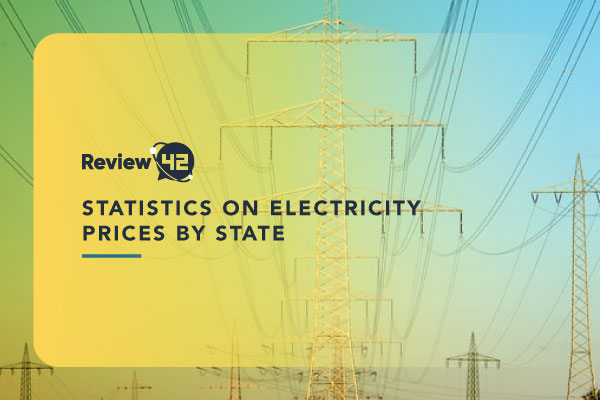2024 Insomnia Statistics That Will Keep You up at Night
 Fact-checked
Fact-checked
Last Updated: February 13, 2024
A quality night’s sleep impacts our overall physical and mental health. We are all aware that good sleep is important in so many ways. Yet, for so many of us, sleep is so elusive.
Why is that? Why do we struggle to fall asleep at night? What is insomnia? What are the most affected and what are the root causes?
If you’ve been there and wondered why it’s so difficult to fall asleep at night, join us!
Find these latest insomnia statistics that check all the boxes!
Fascinating Insomnia Facts
- 75% of adult patients suffer from insomnia.
- 23% of adults have trouble sleeping due to stress and anxiety.
- A third of the general population suffers from insomnia.
- 50-70 million Americans are affected by sleep-related problems.
- 63.3% of women experience insomnia.
- 20% of teenagers get less than 5 hours of sleep.
- 9 million Americans take prescription drugs to help them sleep.
- 43% of people aged 65 or older experience sleep difficulties.
- 25% of children suffer from behavioral insomnia.
- 72% of people with a college or higher degree have the most sleep.
Insomnia Causes Statistics
Based on worldwide insomnia statistics, there are several potential causes for developing insomnia that include: stress, excessive worry and anxiety disorders, depression, physical illnesses and pain, irregular sleep schedules, lifestyle, and mental health disorders.
#1 75% of adult patients suffer from insomnia
(SleepFoundation.org)
There’s a bidirectional relationship between depression and healthy sleep. Poor sleep can foster the development of depression, and having depression makes a person likely to develop sleep issues.
The most common issues associated with depression are insomnia, hypersomnia, and obstructive sleep apnea.
The statistics of insomnia in depressed adolescents reveal that around 75% of young adults suffer from insomnia due to depression. This indicates how big a role depression plays in disrupting sleep patterns among depressed individuals.
#2 About 23% of adults have trouble sleeping due to stress and anxiety.
(SleepFoundation.org)
Many factors can contribute to chronic stress, such as trauma, illness, and poverty. Anxiety disorders are the most common mental health problems. In anxiety disorder, fears are disproportionate to the situation, and worrying interferes with the quality of everyday life. If the feelings are persistent, this can disrupt healthy sleep patterns in many ways.
Studies give the latest data findings on how many adults suffer from insomnia each year. As many as 23% of the adult population reported having sleeping difficulties.
#3 Caffeine taken 6 hours before bedtime has disruptive effects on sleep.
(NCBI)
Caffeine is a natural stimulant and the most widely consumed psychoactive drug. Studies recommend to refrain from caffeine intake for a minimum of 6 hours before bedtime, as caffeine can have a disruptive effect on sleep.
The relation between coffee and insomnia statistics clearly indicates that caffeine taken 6 hours before bedtime will prevent you from falling asleep.
Sleep Deprivation Statistics
How many people suffer from sleep deprivation globally? Have many have recovered? Let’s find out.
#4 About a third of the general population suffers from insomnia.
(NHS)
According to global insomnia statistics, about a third of the general population suffers from chronic insomnia.
The Daily Mirror report reveals that nearly a third of the UK population is suffering from insomnia. Insomnia is a massive health problem and is the most commonly reported mental health complaint in the UK.
#5 50-70 million Americans are affected by sleep-related problems.
(SleepHealth.org)
Based on the sleep deprivation statistics for 2020, the odds of being sleep deprived (sleep less than 6 hours for adults) have increased significantly over the last 30 years, as the lines between work and home become blurred and digital technology overtakes a huge part of our time.
According to the average sleep statistics, sleep-related problems affect 50-70 million Americans of all ages and socio-economic classes.
#6 70% of adults in America report having insufficient sleep.
(SleepHealth.org)
Sleep problems are becoming pervasive, and many people are sleep deprived due to demanding work schedules and lack of education about the importance of sleep.
Around 70% of adults in America report that they have insufficient sleep at least once a month, and another 11% experience sleep troubles every night.
#7 Each year, one in four Americans develop insomnia, but 75% of them recover.
(Science Daily)
Every year, about 25% of Americans report that they are experiencing insomnia. However, 75% recover without developing chronic insomnia symptoms.
Gender Statistics for Insomnia
Let’s look at how insomnia affects women and men. What gender has a harder time falling asleep? Is there a trend?
#8 Women have a 40% higher risk of developing insomnia throughout their lives.
(SleepFoundation.org)
Sleep problems can affect anyone independent of gender; however, an important disparity exists between the two gender groups: women are more prone to insomnia.
Differences in biology and hormonal production are likely the underlying factor for women’s distinct sleep patterns.
Numerous studies have been conducted, and the estimates clearly show that women have a 40% higher risk of developing insomnia throughout their lives.
#9 70% of women with PMDD report symptoms of insomnia.
(SleepFoundation.org)
The research study by the National Sleep Foundation clearly indicates that up to 67% of women reported they have problems with sleeping.
PMDD is a more severe form of PMS with more exaggerated and debilitating symptoms that can interfere with everyday life.
Changing hormones during the menstrual cycle, menopause, and pregnancy have an immense effect on women’s sleep. Women with this condition report insomnia as one of the major symptoms.
The American men and women average sleep statistics reveal that women are more likely to develop insomnia throughout their lives.
#10 63.3% of women experience insomnia.
(Science Direct)
Insomnia in men vs. insomnia in women statistics show that insomnia is more prevalent among women than men.
The gender statistics for insomnia indicate that the overall rate of insomnia is higher among women 63.3% than among men 36.7%.
#11 Lack of sleep among the US workforce results in the loss of 1.2 million working days per year and costs approximately $411 billion.
(Fortune)
A study on the economic costs of insufficient sleep titled “Why Sleep Matters” was conducted by a group of researchers at the non-profit organization RAND Europe. It reveals the many negative effects sleep deprivation can have on the economy and overall productivity.
According to Fortune Magazine, lack of sleep costs the United States over $411 billion annually.
What Age Group Does Insomnia Affect the Most?
Teenagers, college students, and elderly people have the most trouble sleeping – let’s look at the numbers.
#12 20% of teenagers get less than 5 hours of sleep, while the average amount of sleep they get is 6.5 hours.
(Sleep Advisor)
A study published in the Journal of Youth and Adolescence examines the effects of sufficient versus insufficient sleep on mental health.
Although teenagers need about 9 hours of sleep, according to the National Institute of Health, only 3% of students reported getting enough sleep.
According to the teenage insomnia statistics, 20% of teenagers stated they get less than 5 hours of sleep while the average amount is 6.5 hours. Interestingly, teenagers today spend a lot of time being on social media networks.
The primary reason for the lack of sleep among teenagers is depression and anxiety. Parents, educators, and therapists are advised to pay more attention to the role of healthy sleep in preventing mental illnesses.
#13 43% of people aged 65 or older have difficulty sleeping.
(NCBI)
Aging is related to many health concerns, including sleeping difficulties. Poor sleep can result in reducing the quality of life in people over 65. Life changes such as retirement and social isolation can increase stress and anxiety, contributing to sleep issues among the older population.
Recent statistics showing the demographics of the insomnia disorder suggest that 43% of people aged 65 and older experience difficulty falling or staying asleep.
#14 25% of children suffer from behavioral insomnia
(AlaskaSleep.com)
Of all sleeping disorders, behavioral insomnia is the most common one among kids. According to recent insomnia stats, 25% of children are likely to suffer from it during their childhood.
Poor sleeping habits in children can progress into behavioral insomnia. Sleep-deprived children can experience an array of consequences, including irritability, hyperactivity, misbehavior at home and school, learning difficulties, and many other related issues.
#15 72% of people with a college or higher degree have the most sleep.
(Sleep Advisor)
Based on the statistics of college students with insomnia as well as graduates with insomnia, people with a college or higher degree get the most sleep (72%), while unemployed or those unable to work get less sleep (at 51% and 60% respectively).
Insomnia Therapy Statistics
How do people fight insomnia? What is the most effective way to treat insomnia?
#16 20% of adults in the US use alcohol to help them fall asleep.
(Alcohol Rehab Guide)
While this may help them on occasion, in general, alcohol prevents people from falling into a deep sleep known as REM sleep, which is crucial for maintaining normal brain function, physical health, and emotional well-being.
Recent statistics for alcohol and insomnia relation reveals that 20% of adults in the US use alcohol to help them fall asleep.
#17 9 million Americans take prescription drugs to help them fall asleep.
(NBC News)
Desperate for a rest in this hectic world, many people turn to sleeping pills. Nearly 9 million of American adults take sleeping aids to help them fall asleep. If you are not a fan of pills, try talking online with psychic people, perhaps they can help you figure out a problem that you need to solve so you can sleep better.
Their usage is most common among the older, white, and better-educated female population.
#18 70% to 80% of patients with primary insomnia experience improvements after applying the CBT technique.
(SleepFoundation.org)
Cognitive Behavioral Therapy is a multicomponent approach that aims to combat the frustrating symptoms of insomnia. This therapy aims to restructure or break down the cycle of frustrating thoughts by identifying and altering the beliefs that contribute to insomnia. A trained provider assists in evaluating these more objectively.
70% to 80% of patients with primary insomnia improve after applying the CBT technique.
#19 Prolonged-release melatonin has shown a 66% improvement rate among patients suffering from insomnia.
(NCBI)
People with sleeping problems can benefit from taking prolonged-release melatonin. Melatonin is a natural hormone commonly used to improve the quality of sleep, especially for older people and individuals who suffer from certain types of sleeping disorders.
These insomnia statistics show that 66% of people noticed improvements after taking this medication.
#20 Moderate exercise helps to improve sleep quality by 90%.
(NCBI)
According to many insomnia stats, moderate exercise is considered one of the best natural ways to battle acute and chronic insomnia symptoms. Since exercise helps the body produce feel-good hormones, the symptoms of anxiety and depression will gradually decrease.
The medical director at Johns Hopkins Center for Sleep at Howard County General Hospital states that people who engage in at least 30 minutes of moderate exercise will notice an immediate benefit in their quality of sleep.
The study suggests that incorporating moderate exercise into your daily routine can be considered an important part of insomnia treatment.
What Are the 3 Types of Insomnia?
(SleepFoundation.org, Sleepopolis.com)
Not all cases of insomnia are identical. There are three main types of insomnia: acute, transient, and chronic. They have distinguishing features, which can prove useful for health professionals and people suffering from insomnia.
Short-term or acute insomnia is a brief episode of having trouble sleeping. The reason behind this is often a stressful event, loss of a loved one, etc. General insomnia statistics show that it usually lasts a short time, and the symptoms fade away on their own as soon the person copes with the problem. At a stressful time, think about going on an online therapy session if you cannot resolve a problem on your own.
Transient Insomnia
Transient insomnia may not require treatment and usually lasts less than a week.
The causes of transient insomnia are mostly associated with lifestyle factors:
- Stress
- Anxiety
- Grief
- Chronic pain
- Medication or drug consumption
- Alcohol consumption
Chronic Insomnia
In some cases, insomnia can become chronic. People with chronic insomnia have difficulty falling or staying asleep.
Chronic insomnia can be related to poor sleep hygiene, persistent nightmares, underlying physical or mental health conditions, medications, or other sleep disorders.
Statistics for short-term and chronic insomnia suggest that insomnia can have a negative impact on many aspects of your life if not treated properly.
To Sum Up
Ongoing sleep deficiency is linked to many physical and mental-related issues. Having a good sleep is essential for recharging the mind and body and feeling refreshed and alert when you wake up.
We hope that our compilation of insomnia statistics will help you be more informed about this prevalent disease and take a proactive approach in incorporating better sleeping habits and lifestyle changes that will address any other issues that may result in insomnia.
FAQ
According to the National Sleep Foundation, healthy adults need between 7 to 9 hours of sleep per night. The younger population (babies, young children, and teens) need even more sleep since it is crucial for their growth and development. People over 65 need from 7 to 8 hours of sleep per night.
Statistics about insomnia reveal that 1 in 3 adults don’t get enough sleep, which is more than a third of the general population.
The insomnia statistics for 2020 reveal that around 30% of the adult population in America suffers from insomnia.
Many studies point out the relation between getting a bad sleep and mattress quality. An old or unsuitable mattress can be the cause of many sleep-related problems including sleep apnea, allergies, or breathing difficulties.
Snoring is another sleep-related problem that is usually more troublesome for the sleeping partner. Insomnia statistics indicate that a snoring partner or one suffering from sleep apnea is more likely to wake up during the night and feel drowsy and fatigued during the day.
Insomnia can be divided into three categories depending on the symptoms. The first one is primary or acute, which is not caused by any other medical condition or the use of drugs. The second one is transient, and the last one is chronic.
2 Comments
Leave a Reply
You must be logged in to post a comment.
![How Many Marriages End in Divorce [Fascinating Facts and Stats]](https://review42.com/wp-content/uploads/2022/07/How-many-marriages-end-in-divorce.png)
![How Much Do Flight Attendants Make? [Latest Data for 2024]](https://review42.com/wp-content/uploads/2022/06/feature-image-56-how-much-do-flight-attendants-make.jpg)
![How Many Websites Are There? [2024’s Data]](https://review42.com/wp-content/uploads/2022/05/feature-image-55-how-many-websites-are-there.jpg)

![Average Gas Prices by State in the US [2024 Data]](https://review42.com/wp-content/uploads/2022/03/feature-image-51-average-gas-price-by-state.jpg)





froleprotrem
March 30, 2021 at 5:02 pm
I got what you mean , regards for putting up.Woh I am lucky to find this website through google.
Ronald Kithcart
October 28, 2021 at 4:32 am
I was skeptical at first. I was baffled that I actually had the chance to take the time to read this long article. Your style definitely caught my attention. Your return with an outstanding content as usual. Great Article Neil. While I read the article a couple of days ago, I did not leave a comment. However, I felt it was worthy of a”thank you. I’ll be using some of these tips on my own sites in the near future.